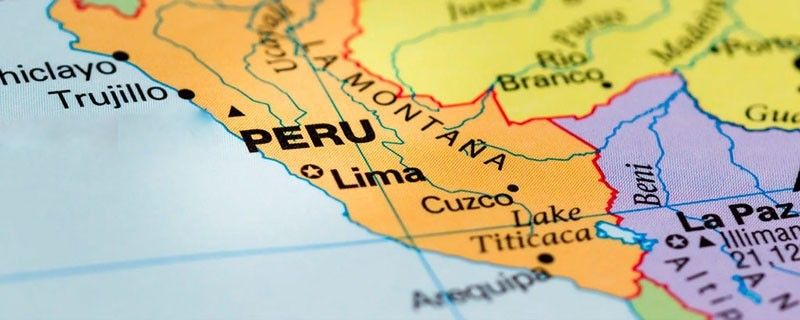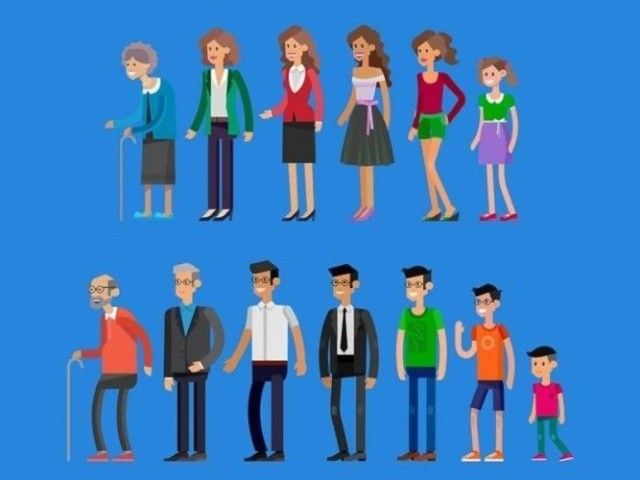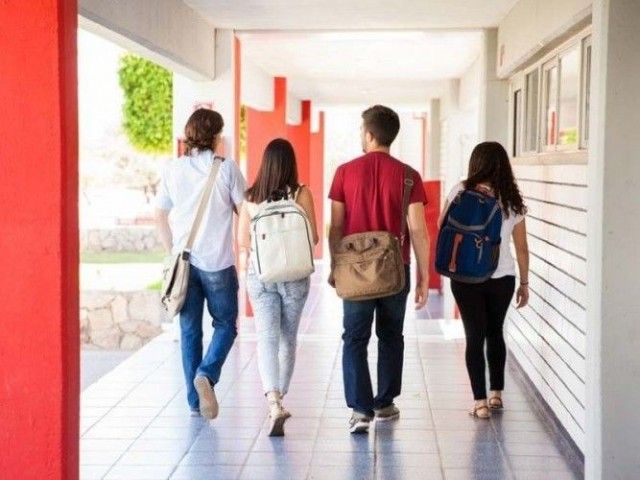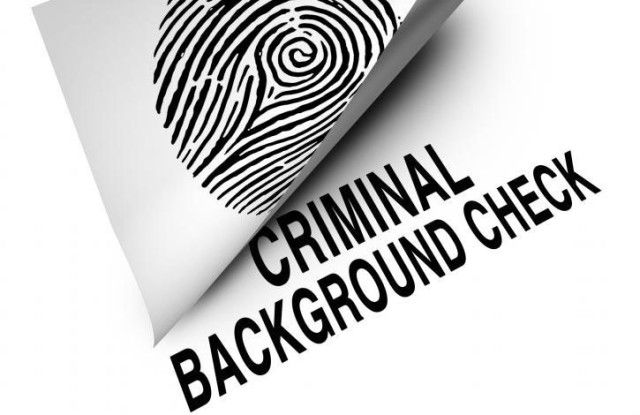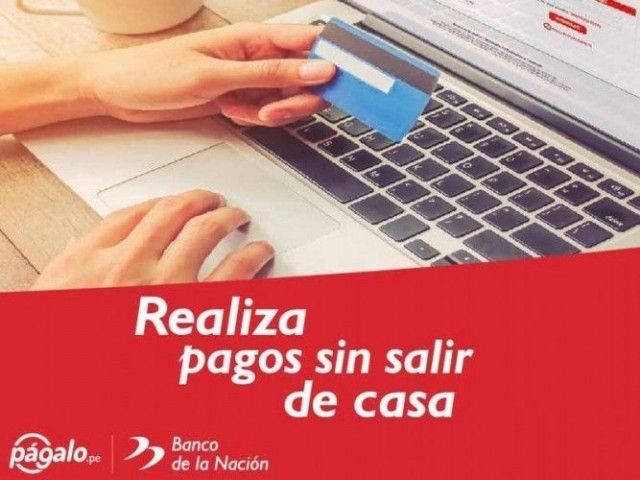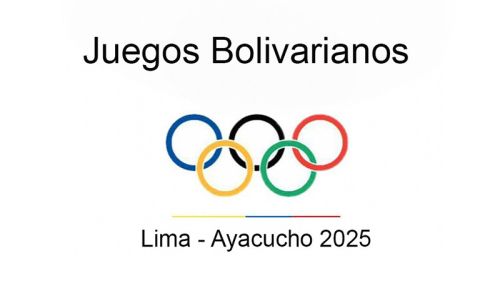Foreign nationals, who want to apply for a residence visa in Peru (for example because they are married to a Peruvian, found work in Peru, want to study at a Peruvian university, etc.) but can’t enter the country visa-free to apply when being in Peru, must apply for their visa from outside the country and once approved enter Peru on the correct residence immigration status.
The process is called “Solicitud de calidad migratoria”, a usually simple, but sometimes lengthy and frustrating endeavor, which was, however, simplied in 2024 and is supposed to be quicker and more transparent now. Below we explain how it's done.
Please be aware: The process explained below as well applies if you need a "real" tourist visa to enter the country and want to apply for a temporary visa (except tourist and business) such as a temporary student visa or a temporary work visa; only the requirements differ a bit and once in Peru you won't need to apply for a foreigner ID.
And if you are a foreinger, who can enter Peru visa-free (so, you don’t have to apply for a “real” tourist visa at a Peruvian consulate), you should come to Peru as a tourist and then change your immigration status - make a so called “Cambio de calidad migratoria” - while being in the country. We explain how you can apply for your temporary or residence visa, when you are already in Peru in our Visa Guide.
Content overview
- Legal background for a residence visa application from outside Peru
- Requirements for a residence visa applicatios from outside Peru
- How to apply for a residence visa from outside Peru
- Approval of the visa
- Picking up your visa at a Peruvian consulate
- Entering Peru and getting your carné (Peru's foreigner ID)
- Conclusion
- Another option …
Legal background for a residence visa application from outside Peru
Where to apply for a residence visa from outside Peru
Contrary to the change of your immigration status, the so-called "Cambio de calidad migratoria", foreigners apply for when they are already in Peru, foreigners being outside the country must apply for an immigration status, make a so-called Solicitud de calidad migratoria.
While for decades Peruvian consulates abroad handled all sorts of visa applications from giving information and handing out the right forms to fill in, to accepting the application and, if approved, issuing the visa, since August 2021, the Peruvian diplomatic missions abroad only handle tourist and business visa applications and refer foreigners, who want to apply for another temporary or residence visa, to Migraciones in Peru. Not really helpful, if you need a visa to enter the country and are thousands of kilometers / miles away.
But there is no way around, even if you are outside Peru, the initial application of your residence visa can only be submitted to Migraciones in Peru using the Agencia Digital, a platform, which allows Peruvians and foreign nationals to handle lots of red tape online.
The crux: if you are still outside Peru and never have been to the country before, you don’t have access to the Agencia Digital as you must enter the date when you last entered Peru during login. Therefore, you most probably will need a representative (a family member, future Peruvian employer, a friend, immigration lawyer, or similar), who submits your visa application for you.
If you, however, have been to Peru before within the last few years, you can apply yourself on the Agencia Digital even though you are not in Peru at the moment (you need the date of your last entry).
Once your visa application is approved, the visa is issued by a Peruvian consulate of your choice, where you can pick it up and then can enter Peru on this visa. After arriving in Peru on your resident status you will have to apply for your carné de extranjería, your Peruvian foreigner ID.
Important laws and regulations
For foreigners planning to stay longer in Peru and to apply for a temporary or resident visa, the most important laws and regulations are the Decreto Legislativo 1350, the "old" Foreigner Law and the Decreto Legislativo 1582, the modification of the Foreigner Law, which both only stipulate general rules, as well as the Decreto Supremo 002-2021-IN from 2021 and the TUPA, which is updated yearly (last time October 22, 2023) Helpful as well is to check out the Peruvian government website. All these documents are, of course, in Spanish.
As the TUPA is always the more current official document, which contains slight changes compared to the Decreto Supremo, we recommend to use it when looking for the most current official information about the requirements in Spanish.
While below under "Requirements for a residence visa application from outside Peru" you find the necessary documents described in English, the official list of requirements for a "Solicitud de calidad migratoria" (in Spanish) can be found in the TUPA:
- for a family visa for adults on page 204, which is page 207 of the PDF, or for children on page 209, which is page 212 of the PDF.
- for a resident work visa on page 213, which is page 217 of the PDF (for temporary workers see page 156, which is page 159 of the PDF)
- for a resident student visa on page 144, which is page 147 of the PDF (for temporary students see page 136, which is page 139 of the PDF)
- for a retirement visa on page 201, which is page 204 of the PDF.
- for a religious visa on page 116, which is page 119 of the PDF.
Requirements for a residence visa application from outside Peru
Below requirements by visa type are for the application of the residence visa if the applicant is still outside Peru.
If you are already in Peru, the requirements and process is different. So, please check out our extensive Visa Guide, where we explain requirements and the application in detail by visa type.
Be aware that Migraciones has the right to request other and/or additional documents at any time.
Family visa (adults) - familiar residente para mayores de edad
Family members of Peruvian nationals and foreigners with a resident status in Peru have the right to a family union and can apply for a family visa, the so-called "visa familiar residente". As, depending on the relation, the family visa has quite a number of sub-visa types, find below the requirements to apply for a family visa for adults, for example: when you are married to a Peruvian or foreigner with resident status.
- Be outside Peru
- Passport
- Clean criminal record check (Antecedentes policiales, penales y judiciales) issued in the country of origin with Apostille und translation in Peru (1) + (2)
- Receipt for paid application fee (code Migraciones 07567; concept Solicitud de calidad migratoria de familiar residente para mayores de edad, S/ 58.80) (3)
- Official document that proves the family tie (please note: same-sex marriages/civil unions are not possible and not recognized in Peru):
- if the applicant is married to a Peruvian or foreigner with resident status: marriage certificate
- If you were married in Peru: recent certified copy of your marriage certificate issued by Reniec
- If you were married abroad to a Peruvian: certified copy of your marriage certificate issued by the Peruvian consulate and then legalized by the Ministerio de Relaciones Exteriores (RREE) in Lima or their offices in the provinces.
- If you were married to a foreigner abroad: marriage certificate with Apostille and translation into Spanish in Peru (1) + (4)
- if the applicant is married to a Peruvian or foreigner with resident status: marriage certificate
- Up-to-date DNI of the Peruvian family member with correct family address, correct marital status and no pending election fees or up-to-date carné de extranjería of the foreigner with resident status
- If applicable: Power of attorney for the person representing you in Peru, so for the one that does the application for you
You find the requirements for minors and adult children in the TUPA linked above.The application process is the same, you just have to choose the correct visa type and then submit the for the visa type required documents.
And if you are already in Peru, you find detailed information on how to apply in our Family Visa article
Resident work visa (trabajador residente)
Foreigners, who have a valid and legally signed work contract with a Peruvian company with a validity of at least 12 months that was approved by the Peruvian Labor Ministry can apply for a work visa in Peru.
- Be outside Peru
- Passport
- Clean criminal record check (Antecedentes policiales, penales y judiciales) issued in the country of origin with Apostille and translation in Peru (1) + (2)
- Receipt for paid application fee (code Migraciones 07567; concept Solicitud de calidad migratoria de trabajador residente, S/ 58.80) (3)
- Work contract with a duration of at least 12 months approved by the Peruvian Ministry of Labor (not older than 30 days)
- Sworn statement of the legal representative of the company
- SUNAT registration of the employing Peruvian company (RUC, Peruvian tax number)
- If applicable: Power of attorney for the person representing you in Peru, so for the one that does the application for you
Please be aware that in case your work contact with a Peruvian company has a validity of less than 12 months or has a probation period you must apply for a temporary work visa. The application process is the same, you just have to choose the correct visa type and then submit the for the visa type required documents.
And if you are in Peru, you find detailed information on how to apply in our Work Visa article
Resident student visa (formación residente)
Foreigners planning to study at a Peruvian educational institution or to do an internship / apprenticeship (without payment!) at a Peruvian company for more than 12 months can apply for a resident student visa.
- Be outside Peru
- Passport
- Clean criminal record check (Antecedentes policiales, penales y judiciales) issued in the country of origin with Apostille and translation in Peru (1) + (2)
- Receipt for paid application fee (code Migraciones 07567; concept Solicitud de calidad formacion residente, S/ 58.80) (3)
- Document proving your studies / intership / apprenticeship
- for students: Enrollment certification issued by the recognized Peruvian educational institution
- for exchange students: Official letter from the recognized Peruvian host university or higher education institution
- for interns: Official letter from the Peruvian company
- Sworn statement stating that you (in case of minors, the parents) have sufficient financial resources to fund your studies or internship in Peru
- If applicable: Power of attorney for the person representing you in Peru, so for the one that does the application for you
Please be aware that in case you plan to study or do an internship for less than 12 months you must apply for a temporary student visa. The application process is the same, you just have to choose the correct visa type and then submit the for the visa type required documents.
If you are in Peru, you find detailed information on how to apply in our Student Visa article
Retirement visa (rentista residente)
Foreigners, who receive a state or private pension including social security pension, government pension, employment related pension, union pension, disability pension, etc., so lifetime annuities, other lifelong benefits or a permanent income for the rest of their life from royalties or dividends of at least US$ 1000 per month or the equivalent in any other currency can apply for a permanent residency in Peru called Rentista visa.
- Be outside Peru
- Passport
- Clean criminal record check (Antecedentes policiales, penales y judiciales) issued in the country of origin with Apostille and translation in Peru (1) + (2)
- Receipt for paid application fee (code Migraciones 07567; concept Solicitud de calidad migratoria rentista residente, S/ 58.80) (3)
- Letter / confirmation from your pension fund or social security stating that you receive a monthly income of at least US$ 1000 or the equivalent in any other currency with Apostille and translation in Peru (1) + (4)
- If applicable: Power of attorney for the person representing you in Peru, so for the one that does the application for you
If you are in Peru, you find detailed information on how to apply in our Retirement Visa article
Religious visa (religioso residente)
- Be outside Peru
- Passport
- Clean criminal record check (Antecedentes policiales, penales y judiciales) issued in the country of origin with Apostille and translation in Peru (1) + (2)
- Receipt for paid application fee (code Migraciones 07567; concept Solicitud de calidad migratoria residente religioso, S/ 58.80) (3)
- Request issued by the religious entity, which must be recognized by the Peruvian state, where the applicant finds his home in Peru. The request must be signed by the legal representative of the religious entity and must include name(s) and surname(s) of the applicant as well as the time he or she stays in Peru
- Sworn statement of the legal representative of the religious entity affirming the details of the official registration and his/her power of representation or an official document confirming his / her powers.
- If applicable: Power of attorney for the person representing you in Peru, so for the one that does the application for you
If you are in Peru, you find detailed information on how to apply in our Religious Visa article
Explanatory notes for the requirements
(1) All foreign documents (even so-called “international” certificates) need an Apostille or, if the country in which they were issued, didn't sign the Apostille Convention have to be legalized by a Peruvian consulate abroad and must be translated into Spanish (best use a certified translator, a so-called traductor publico juramentado, in Peru).
(2) As we get many question about the “Antecedentes policiales, penales y judiciales” we dedicated a separate article to the topic where we explain in detail what kind of document you need, where you get it and what to watch out for when applying for it.
(3) Payments can be made at any Banco de la Nacion branch or using the Banco de la Nacion online payment system pagalo.pe. Be aware that the payment must be done using your account correctly registered with your full name (as in your passport) and your passport number. Payments made using other accounts are not accepted. In our article "Paying administration charges and processing fees in Peru" we explain in detail how you can register and create an account and then pay the fee.
(4) Be aware that documents have an "expiration" date in Peru. If not otherwise stated:
- Documents issued in Peru are usually only accepted when they were issued a maximum of 3 months prior to being submitted (exception work contract, which can't be older than 30 days).
- Documents issued outside Peru are usually only accepted when they were issued not more than 6 months prior to being submitted.
Application process for a residence visa if you are outside Peru
Unfortunately, if you are outside Peru, you can’t apply for a residence visa at a Peruvian consulate anymore. For the application the Agencia Digital, the Migraciones online platform, must be used. But the problem is that if you are still outside Peru and never have been to the country before, you don’t have access to the Agencia Digital as you must enter the date when you last entered Peru during login. So, you need a representative, for example, a family member, a friend, your employer, your university, or an immigration lawyer handling your application.
If you, however, have been to Peru before within the last few years you can apply for yourself on the Agencia Digital even though you are not in Peru at the moment (you need the date of your last entry), making the process much more simple.
As a work visa application should be handled by your future Peruvian employer, a student visa by the Peruvian university and the religious visa by the Peruvian religious entity, below we explain how it’s done if a Peruvian spouse or a spouse with resident status applies for a family visa for the foreign partner abroad.
But the process is the same for all residence visa types, even for temporary ones. So, in case a good friend or whoever is up to the task, be it a Peruvian or a foreigner with carné, handles, for example, your student or retirement visa application (s)he can follow the same easy steps and just choose the correct visa type and then has to upload the for the visa type required documents.
One remark before we start: even though we try to keep this guide as up-to-date as possible, due to constant changes to the Agencia Digital not everything might be exactly as described below. So, please see this walk-through as general guidance only. If you find mistakes or some changes to the process described below, you are more than welcome to share your experience below as a comment (visible to everyone after approval) or to use the e-mail button on the bottom of the page to send a private e-mail.
Migraciones Agencia Digital
Once you have all required documents together, the person applying for you must open the Migraciones Agencia Digital and click on Entrar.
On the next page "Peruano" must be selected if the person who applies for you is Peruvian or "Extranjero" if he is a foreigner with resident status. If you can apply for yourself, click on "Extranjero".
Then (s)he just has to enter his/her personal data as requested to log into the Agencia Digital.
Peruvians:
- Numero de DNI: DNI number of the Peruvian, who is applying for you.
- Fecha de nacimiento: birthdate of the Peruvian, who is applying for you.
- Fecha de emision: date when the DNI of the Peruvian, who is applying for you, was issued.
- Departmento, provincia, distrito: department, province and district where the Peruvian, who is applying for you, was born.
Foreigners:
- Tipo de documento: document with which the foreigner with resident status, who is applying for you is registered in Peru (passport or carné)
- Numero de documento: his/her passport / carné number
- Fecha de nacimiento: birthdate of the foreigner with resident status, who is applying for you (click on the little calendar; to choose the year: click on the down arrow next to the date, then, if necessary, click on the less-than-sign and choose the year; afterwards select the month and the day).
- Nacionalidad: nationality of the foreigner with resident status, who is applying for you (be aware that the nationalities are in Spanish; so, you won't find United Stated or US and must select EE.UU; or you won't find UK and must choose Gran Bretaña (or Inglaterra or Escocia); or no Netherlands but Paises Bajos, no Germany but Alemania, etc.)
- Ultimo movimiento migratorio de entrada: date when the foreigner with resident status, who is applying for you, last entered Peru
After entering the captcha and clicking on "Verificar", the person is now on the main page of the Agencia Digital.
1st page of the visa application
On the main page of the Agencia Digital the person, who is applying for you, can either use the search field or find in the menu on the left the point "Solicitud de calidad migratoria". (S)He should click on it and a submenu opens with all available visa types.
As this walk-through explains the family visa based on being married to a Peruvian the person applying should select the point "Familiar residente - casado(a) con peruana(o) o extranjero(a) residente and (s)he gets to the first page of the actual visa application.
Here, the Migraciones branch, which should handle the application (for example, Lima, Cusco, Arequipa, …) must be selected. After clicking on Siguente a new page opens.
2nd page of the visa application
The person, who is applying for you, is now on the "Datos del benefiario" page. Here (s)he must enter the your personal data, so the personal information of the actual applicant, who wants the visa.
Your personal data must (!!!) be filled in exactly as in your passport (the document with which you will enter Peru)
- Nacionalidad: your nationality
- Tipo de documento: the document with which you will enter Peru (most probably passport)
- Numero de documento: your passport number
- Apellido paterno: your last name
- Apellido materno: if you have a second last name, enter it here; if you only have one last name leave the field blank
- Nombres: your first name(s)
- Fecha de nacimiento: your birth date
- Sexo: your sex (male or female)
- Celular: your cell phone number
- Correo electronico: your e-mail address
- Lugar de Recojo: the place you want to pick-up your visa once it is approved (if necessary, can be changed after the visa approval)
- Oficina Consular: the consulate, where you want to pick up your visa once it is approved (if necessary, can be changed after the visa approval)
Then the person applying for you should make sure that all your personal information is 100% correct, then click on "Validar beneficiario", accept the terms and conditions and click on "Siguiente".
3rd page of the visa application
After clicking on "Siguiente" a new window at the bottom opens ("Requisitos del beneficiario") and the person, who is applying for you must fill in some data and/or upload all for the visa application necessary documents as PDF (max size per document 3MB).
Those who just want to verify the requirements or double check if the requirements have changed can do so on this page. Then just click through the tabs but do not upload any documents and do not click on Siguente; once you finished just leave the page.
To continue with the visa application, the person, who is applying for you, just has to click on the little arrows next to each requirement, and certain fields appear depending on the requirement, which must be filled as requested and corresponding documents uploaded.
Under “Pago por derecho de tramite” certain information of the bank receipt must be filled in:
- numero de recibo (number of the receipt) which is the "secuencia de pago" on the pagalo receipt
- codigo de verficación (verification code) which is the "codigo control" on the pagalo receipt
- fecha de recibo (date) which is the "fecha de operación" on the pagalo receipt.
After entering the requested info "Validar" must be clicked.
Under the "No contar con antecedente" tab your criminal record check with Apostille and translation must be uploaded.
Unter the "Documento especificos" tab the marriage certificate must be uploaded.
Under the "Documento de viaje" tab the document with which you will enter Peru (in most cases passport) must be selected and then the passport number, the date of issue and the country of issue entered. A copy of the passport page with your photo and personal data must be uploaded.
Under the "Documentos de representatividad legal" tab, the power of attorney for the person, who is applying for you, must be uploaded.
Under the "Documento de identidad del representante legal" tab a copy of the DNI (in case the person, who is applying for you is Peruvian) oder Carné de extranjería (in case the person, who is applying for you is a foreigner with residence status) must be uploaded.
Once all required fields are filled in and all documents uploaded, there should be a green check in front of each tab. Then, after clicking on "Agregar beneficiario", the terms and conditions must be confirmed and the person who is applying for you must click on Siguiente to finalize the application.
4th page of the visa application
Here the "Registro de Solicitud de Calidad Migratoria" document is displayed on the screen.
The person, who is applying for you should click on the "Descargar" and/or "Imprimir" button to download and/or print the complete document. This "Registro de Solicitud de Calidad Migratoria" document is the confirmation of the successful application. It should be kept safe!!!
Then it's a waiting game. The person, who applied for you should regularly check the Buzon electonico, the personal Migraciones mailbox for notifications from Migraciones (for example, request to upload missing or additional documents, approval or denial of your visa application, etc.).
The Buzon can be accessed by clicking on the "Buzon electronico" button on the top of the main page of the Agencia Digital or by using this direct link. The username (usario) and password (contraseña) should be on the "Registro de Solicitud de Calidad Migratoria" document.
Be aware that notifications sent via the buzon are considered "officially delivered". If the person, who applied for you doesn't react to a deadline Migraciones usually gives in these notifications (in most cases only 5 days), your application can be dismissed. So, if Migraciones sends a notification informing that a required document wasn't uploaded, that an uploaded document isn’t to their liking or they want an additional document, no time should be wasted.
Approval of the visa
Officially the processing time of visa applications is 30 business days. However, according to feedback we got from our readers, it usually takes around three months or even longer until a notification from Migraciones is sent to the Buzon of the person, who applied for you, with the official resolution that your visa was approved.
Nevertheless, the Buzon should be checked regularly as you might belong to the lucky ones that get their approval within three or four weeks after application. On the other hand, in case the person, who applied for you hasn't heard anything from Migraciones 4 months after the application, (s)he should check with them what's going on.
Anyway, usually, after 3 months the person, who applied for you, finds a notification in his / her Buzon electronico (the subjection line should be something like "Notificación tramite solicitud de calidad migratoria") informing about the approval of your visa.
Congrats, the first chapter on your way to Peru is done.
Picking up your visa at a Peruvian consulate
Once your visa application was approved, you must make an appointment at the Peruvian consulate, which was chosen during the application. As the procedures for picking up your visa vary slightly depending on the consulate, best get directly in contact with this consulate you chose to make the appointment, confirm, which documents you must bring with you and ask about the process.
On the day of your appointment be at the consulate 15 - 30 minutes before. Usually, you will only need your passport, the approval notification from Migraciones and the appointment confirmation. However, sometimes consulates additional ask for other documents, so make sure you come prepared with everything needed. The visa is usually issued on the same day.
Great. You now have your visa in your passport and are all set to come to Peru.
Entering Peru and getting your carné (Peru's foreigner ID)
As soon as you have the visa in your passport, it's time to find your way to Peru. Officially, you have 6 months (usually calculated from the day the visa was issued) to enter the country. At the airport or border just proceed to the immigration control counters and present your passport with the visa.
You made it to Peru, congrats. But we are not finished yet and must get your carné. And don't waste any time. You just have 30 days to apply for it.
Interpol - Ficha de Canje
Before you can apply for your carné you first must get the so-called Ficha de Canje from Interpol in Peru. Find a detailed description of how it’s done in our article “Interpol - Ficha de Canje Internacional”.
Apply for the carné
As soon as you have the Ficha de Canje from Interpol, pay the fee of S/ 24.00 for the Migraciones administrative procedure “Expedición del carné de extranjería" under code 07561 Formulario F-SPE001. As you already paid the Interpol fee, you know how the systems works, otherwise check again in our article "Paying administration charges and processing fees in Peru".
Then, it's time to apply for your carné. As you are now in Peru, you can do it on your own.
So, open the Migraciones Agencia Digital and click on Entrar.
On the next page, select "Extranjero". Then fill in the following fields:
- Tipo de documento: choose in the drop-down menu the document with which you entered Peru (most probably passport)
- Numero de documento: enter your passport number
- Fecha de nacimiento: enter your birthdate (click on the little calendar; to choose the year: click on the down arrow next to the date, then, if necessary, click on the less-than-sign and choose the year; afterwards select the month and the day).
- Nacionalidad: select your nationality in the drop-down menu (be aware that the nationalities are in Spanish; so, you won't find United Stated or US and must select EE.UU; or you won't find UK and must choose Gran Bretaña (or Inglaterra or Escocia); or no Netherlands but Paises Bajos, no Germany but Alemania, etc.)
- Ultimo movimiento migratorio de entrada: click on the calendar and choose the date you entered Peru
- Codigo Captcha: just enter the captcha.
Click on Verificar.
You are now on the main page of the Agencia Digital. Here you can either use the search field or find in the menu on the left the point “Expedición de carné de extranjería". Click on it and you get to the first page of the application.
Here, select the Migraciones branch or MAC center closest to you which should handle your application (for example, Lima, Cusco, Arequipa, …). Click on Siguiente.
You must now fill in some data and/or upload all for the carné application necessary documents as PDF (max size per document 3MB). So, click on the little arrows next to each requirement, and certain fields appear depending on the requirement. Just fill in the fields as requested and upload the corresponding document.
Under “Pago por derecho de tramite” you are asked to enter certain information of the bank receipt
- numero de recibo (number of the receipt) which is the "secuencia de pago" on the pagalo receipt
- codigo de verficación (verification code) which is the "codigo control" on the pagalo receipt
- fecha de recibo (date) which is the "fecha de operación" on the pagalo receipt.
After entering the requested info click on Validar.
Under the "Documento de Identificación del administrado" tab, select the document with which you entered Peru (in most cases passport). You are then asked to fill in your passport number, the date of issue and the country of issue and upload a copy of the passport page with your photo and personal data.
Under the "Documentos specificos" tab, you must upload the Ficha de Canje from Interpol.
Once you filled in all required fields and uploaded all your documents, there should be a green check in front of each tab. Accept the terms and conditions and click on Siguente.
You are now on the page, where you must choose in the displayed calendar a date and time for your biometric data appointment. The red fields are already taken, so, choose a green field and click on Siguiente.
On the next page the "Expedicion de carné de extranjeria" form is displayed on your screen. Some or all personal data is already filled in. Check that all fields are filled in and that all your personal data is 100% correct. If not, change the information accordingly. If everything is correct, click on "Guardar datos y generar tramite".
Now, the "Formulario SE-Expedicion de carné de extranjeria" document is displayed on your screen. That's the confirmation of your successfull application.
Use the button at the top to download (descargar tramite) the document and keep it safe.
At the top right of the downloaded document under the bar code you again find your Numero de expediente (file number), which sometimes is also called Numero de tramite. It consists of 2 letters (usually some abbreviation of the Migraciones office where you applied; LM for Lima, for example; or CY for Chiclayo, etc.) and 9 numbers. At the bottom of the first page, the Fecha de publicacion (application date) and a Codigo de verificacion (verification code) are shown. On the second page you as well find your login data for the Migraciones electronic mailbox, called Buzon electronico.
Additionally, use the buttons at the top to download the appointment confirmation (constancia cita). Print it (!!!) and keep it safe (!!!).
Biometric data appointment
On the day of your biometric data appointment, be at the Migraciones office you selected when making the appointment 15 - 30 minutes before your appointment. You will only need your printed (!) appointment confirmation and your passport.
The process varies a bit depending on the office. At the Lima Migraciones office, for example, you get a ticket with a number on it. Then just join the line and wait until your number is shown on the screen. When it's your turn proceed to the counter, where you have to sign on a signature pad, you are digitally fingerprinted and a biometric photo is taken.
Do not wear a white shirt or a top in light or pastel color! Migraciones might refuse to take your photo. Best wear a simple black shirt or something in a dark or strong color.
There were times when the process at the Migraciones office in Lima was quick and astonishingly well organized and you were done in less than half an hour. However, over the past few months some foreigners reported that their appointment time wasn't respected and they had to wait an hour or two until they made it to the counter where the process was quick and smooth. So, plan accordingly.
At the Migraciones offices in the provinces, the whole process is usually quick and painless.
After your biometric data appointment, all you can do is check your Buzon electronico regularly and wait until you get a notification from Migraciones informing you that your carné is ready.
Picking up your carné
As soon as you got the official notification that your carné is ready, get going.
Be aware that in some Migraciones offices you need an appointment to pick up your carné while at others, especially in the provinces, no appointment is needed and you can just show up any time, any day or at a specific day and/or time. Please check with the Migraciones office where you applied.
If you need an appointment, then just enter the Agencia Digital. On the main page in the left menu under "Citas en linea", subpoint "para recojo de documentos" make an appointment to pick up your carné. Once again, download and print the confirmation and keep it safe.
Please note: Especially in Lima it can be a mission to get an appointment to pick up your carné. Your only option is to try again and again and again, tomorrow, the day after, a week later, ... You could also try to change the Migraciones office, where you want to pick up your carné, and see if there appointments are available.
If, for whatever reasons, you urgently need your carné number or something to prove that you have a carné but can't get an appointment to pick it up, you can download a document on the Agencia Digital confirming that you have a valid carné despite not having the actual card in your hands yet. On the main page of the Agencia Digital in the left menu, click under "Constancias" on the point "Carné de Extranjería". You get a page with the data that is printed on your carné. Below just confirm "Estos son los datos con los cuales se emitirá su constancia ...." by clicking on the little square and click Siguiente. Now, the "Constancia de Emisión de carné de Extranjería" is displayed on your screen. Just download it and, if necessary, print it and you have proof that you have a carné and are legally in the country.
Anyway, to pick up your carné you just need your passport. If you have an appointment you as well must bring your printed appointment confirmation. Best be at the Migraciones office 15-30 minutes before. Migraciones personal will point you in the right direction where you are handed your carné.
Congratulations! You finally made it!
Conclusion
This is the official and correct way for all foreigners, who can't travel to Peru visa-free, to apply for a residence visa from outside Peru, enter the country on the correct immigration status and get the carné. However, while the application process itself is simple (even if it sounds overwhelming), in most cases you need someone in Peru as your representative, who is up to the task. And, as mentioned above, the time from submitting the application until the approval (or denial) can be many months, where you sit in your home country waiting for news and being separated from your loved one or increasingly getting frustrated as you can't travel to Peru yet to start your studies, new job, ...
So, while this option is doable, you need lots and even more patience and in most cases someone you fully trust in Peru.
Another option ...
Even though not the correct official way for foreign nationals, who cannot travel to Peru visa-free, and even though it might seem difficult or near impossible, move heaven and earth to get a tourist visa for Peru with which you enter the country and then apply as everyone else in Peru for your residence visa, make a so-called cambio de calidad migratoria. While the organization and preparation might take a few weeks and you, of course, must be able to fulfill the requirements for a tourist visa, this option - in most cases - is a much quicker way to be, for example, reunited with your spouse and/or start your life in Peru and you can handle the application in Peru on your own.
So, the best way to get started is by contacting the nearest Peruvian consulate asking for the exact requirements for a tourist visa application for Peru and how exactly the process works. Under no circumstances mention your real intention of applying for a residence visa once you are in Peru, otherwise your tourist visa application will be denied. So, do not mention that you, for example, are married to a Peruvian, or want to study long-term in Peru, or already have work lined up or whatever. You want to visit this beautiful country as a tourist (best have a possible itinerary prepared) and can prove that you fulfill the requirements. That's it. In case they aren't helpful or you can't get there (you usually must apply in person and get through an interview), there are as well a few consulates worldwide that issue tourist visas for non-residents.
As soon as you have sorted out the tourist visa question and before (!) travelling to Peru, get all necessary documents together you need for your residence visa application once you are in Peru. Our Visa Guide lists the requirements in detail and explains how the application process works for a residence visa application works in Peru..
All the best!


